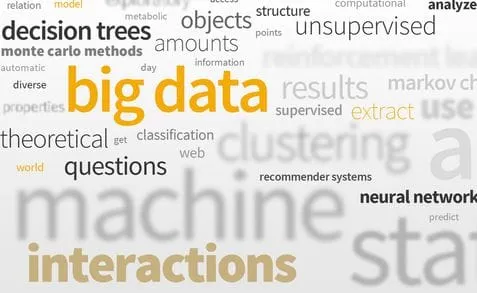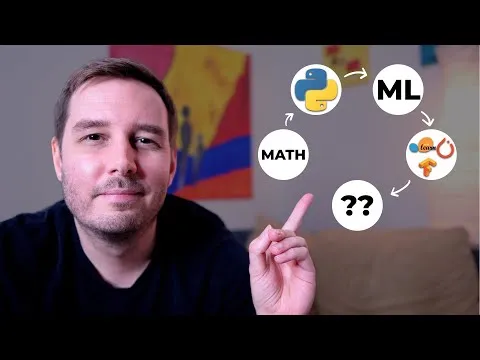
Machine Learning: Unsupervised Learning 
Unsupervised Learning is a powerful tool used by companies like Netflix and Amazon to predict user preferences. By analyzing data, it can identify patterns and make predictions without the need for human input. ▼
ADVERTISEMENT
Course Feature
![]() Cost:
Cost:
Free
![]() Provider:
Provider:
Udacity
![]() Certificate:
Certificate:
No Information
![]() Language:
Language:
English
![]() Start Date:
Start Date:
Self Paced
Course Overview
❗The content presented here is sourced directly from Udacity platform. For comprehensive course details, including enrollment information, simply click on the 'Go to class' link on our website.
Updated in [March 06th, 2023]
Machine Learning: Unsupervised Learning is a course designed to provide students with an understanding of the fundamentals of unsupervised learning. Students will learn about the different types of unsupervised learning algorithms, such as clustering, association rule mining, and dimensionality reduction. They will also explore the applications of unsupervised learning in various fields, such as natural language processing, computer vision, and robotics. Through hands-on activities, students will gain practical experience in implementing unsupervised learning algorithms and applying them to real-world problems. By the end of the course, students will have a comprehensive understanding of unsupervised learning and its applications.
[Applications]
After completing this course, learners can apply the concepts of unsupervised learning to a variety of real-world problems. They can use clustering algorithms to identify patterns in data, and use dimensionality reduction techniques to reduce the complexity of data. Additionally, learners can use unsupervised learning to detect anomalies in data and to generate new features from existing data. Finally, learners can use unsupervised learning to build recommendation systems and to perform market segmentation.
[Career Paths]
1. Data Scientist: Data Scientists are responsible for analyzing large datasets to uncover patterns and insights. They use a variety of techniques, such as machine learning, to develop predictive models and algorithms. Data Scientists are in high demand due to the increasing need for data-driven decision making. As the field of machine learning continues to grow, Data Scientists will be needed to develop and maintain complex models.
2. Artificial Intelligence Engineer: Artificial Intelligence Engineers are responsible for developing and deploying AI-based solutions. They use machine learning algorithms to create intelligent systems that can automate tasks and make decisions. AI Engineers are in high demand as businesses look to leverage the power of AI to improve their operations.
3. Machine Learning Engineer: Machine Learning Engineers are responsible for developing and deploying machine learning models. They use a variety of techniques, such as supervised and unsupervised learning, to create models that can accurately predict outcomes. As the field of machine learning continues to grow, Machine Learning Engineers will be needed to develop and maintain complex models.
4. Deep Learning Engineer: Deep Learning Engineers are responsible for developing and deploying deep learning models. They use a variety of techniques, such as convolutional neural networks, to create models that can accurately predict outcomes. As the field of deep learning continues to grow, Deep Learning Engineers will be needed to develop and maintain complex models.
[Education Paths]
1. Bachelor of Science in Computer Science: This degree path provides students with a comprehensive understanding of computer science fundamentals, including algorithms, data structures, programming languages, and software engineering. It also covers topics such as artificial intelligence, machine learning, and natural language processing. This degree path is ideal for those interested in developing and applying machine learning algorithms to solve real-world problems. The demand for computer science professionals is growing rapidly, and this degree path is a great way to stay ahead of the curve.
2. Master of Science in Artificial Intelligence: This degree path focuses on the development of artificial intelligence systems and their applications. It covers topics such as machine learning, natural language processing, computer vision, robotics, and more. This degree path is ideal for those interested in developing and applying AI systems to solve real-world problems. The demand for AI professionals is growing rapidly, and this degree path is a great way to stay ahead of the curve.
3. Doctor of Philosophy in Machine Learning: This degree path focuses on the development of machine learning algorithms and their applications. It covers topics such as supervised and unsupervised learning, deep learning, reinforcement learning, and more. This degree path is ideal for those interested in developing and applying machine learning algorithms to solve real-world problems. The demand for machine learning professionals is growing rapidly, and this degree path is a great way to stay ahead of the curve.
4. Master of Science in Data Science: This degree path focuses on the development of data science techniques and their applications. It covers topics such as data mining, data visualization, predictive analytics, and more. This degree path is ideal for those interested in developing and applying data science techniques to solve real-world problems. The demand for data science professionals is growing rapidly, and this degree path is a great way to stay ahead of the curve.
Course Provider

Provider Udacity's Stats at AZClass
Discussion and Reviews
0.0 (Based on 0 reviews)
Explore Similar Online Courses

Anger Management and Control

Modeling and Control of Power Electronics

Python for Informatics: Exploring Information

Social Network Analysis

Introduction to Systematic Review and Meta-Analysis

The Analytics Edge

DCO042 - Python For Informatics

Causal Diagrams: Draw Your Assumptions Before Your Conclusions

Whole genome sequencing of bacterial genomes - tools and applications

How I would learn Machine Learning (if I could start over)

Learn Data Science and Machine Learning on Microsoft Azure

Machine Learning for Everyone
 Related Categories
Related Categories
 Popular Providers
Popular Providers
Quiz
 Submitted Sucessfully
Submitted Sucessfully
1. Which of the following is an example of unsupervised learning?
2. Which of the following is an example of supervised learning?
3. Which of the following is an example of semi-supervised learning?


Start your review of Machine Learning: Unsupervised Learning